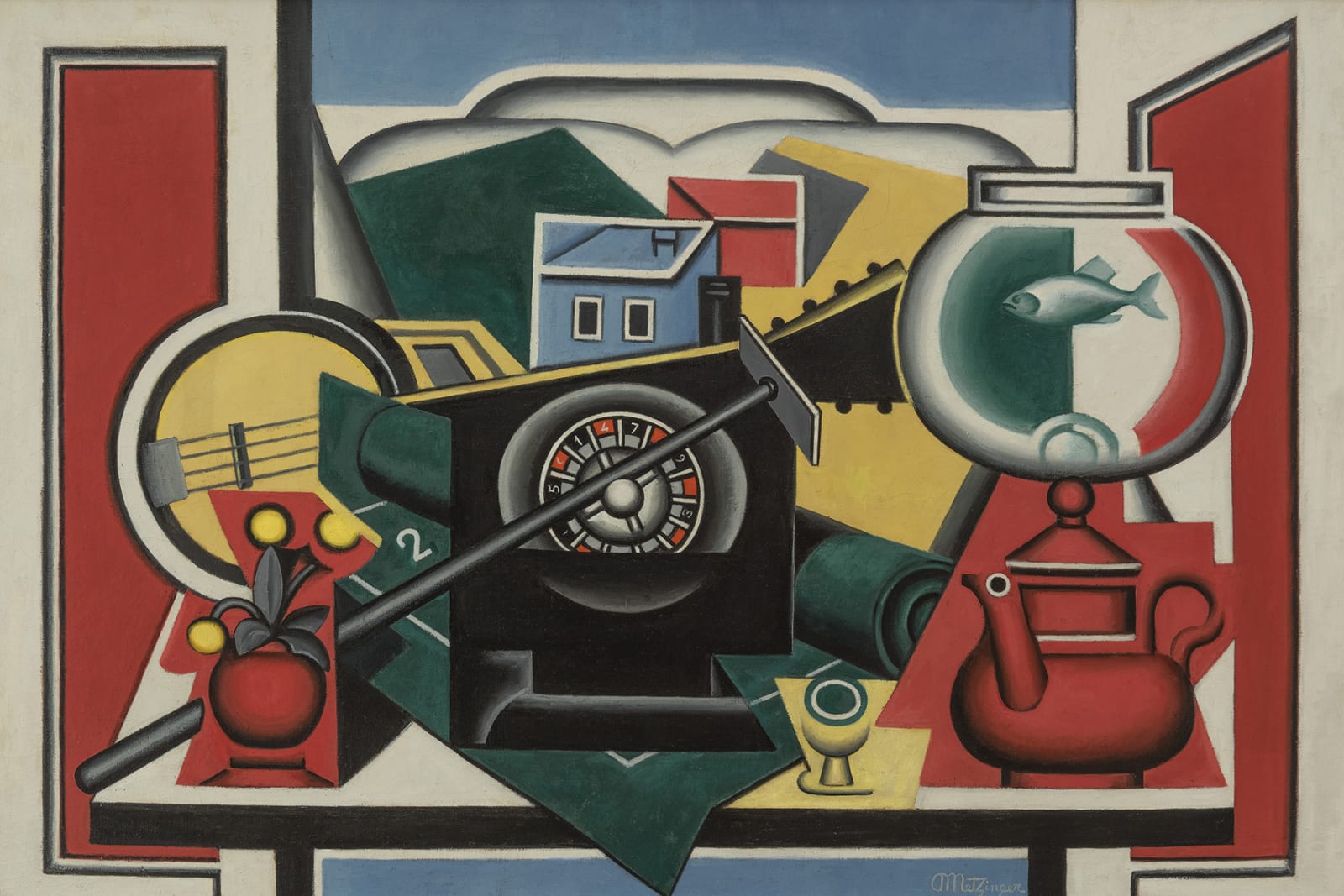Jean Metzinger French, 1883-1956
La Roulette, 1926
Signed at lower right: J Metzinger
Oil on canvas
38 x 57 inches
96.5 x 144.8 cm
96.5 x 144.8 cm
Jean Metzinger was a leading progenitor and theorist of Cubism. Born in Nantes, France, in 1883, he came to Paris in his twenties to pursue a career as a painter....
Jean Metzinger was a leading progenitor and theorist of Cubism. Born in Nantes, France, in 1883, he came to Paris in his twenties to pursue a career as a painter. He soon fell in with the major innovators of what would become Cubism: Robert Delaunay, Guillaume Apollinaire, Albert Gleizes and Fernand Leger. The last of these would come to shape his aesthetic as he moved past the initial burst of Cubism to a simplified planar treatment known as Purism. In 1911, Metzinger showed along with his upstart cohort at Salle 41 at the Salon des Indépendants, the first exhibition of Cubism. He co-authored, with Gleizes, Du cubisme, a foundational tract on the movement, and the following year, 1913, he again exhibited wildly innovative cubism at the Salon of the Section d’Or (which he co-founded) and at Galerie de la Boétie in Paris alongside Alexander Archipenko, Leger, and Juan Gris. In 1916, he joined Marcel Duchamp and Gleizes to show at Montross Gallery, before returning to Paris for military service in 1919.
The present work, executed after the war, came as a synthesis of his early ideas as well as a response to post-war return to classical subject matter. Metzinger’s response is summarized in a December 1924 article in Bulletin de l’Effort Moderne:
It is now possible to go to the extreme limits of realism without falsifying the initial harmony . . . In Cubism, which is now in evolution, our attention will be less concerned with the exterior object, and the model, than with the ensemble of forms and colors which constitute a painting . . . The difference which separates this sort of painting from classical painting is however much less than would appear. All true artists always attempt to construct an interior and classic vision which is based on an exclusively classic order.
The “exclusivity of classic order” is on full view in La Roulette, even as the fractious picture-plane insists on a cubist idiom. Leger’s influence is clear, as the “Purist” treatment of planes allows clean areas of color, a distance from “painterly” touch, and nonetheless classically modern subject matter.
The present work, executed after the war, came as a synthesis of his early ideas as well as a response to post-war return to classical subject matter. Metzinger’s response is summarized in a December 1924 article in Bulletin de l’Effort Moderne:
It is now possible to go to the extreme limits of realism without falsifying the initial harmony . . . In Cubism, which is now in evolution, our attention will be less concerned with the exterior object, and the model, than with the ensemble of forms and colors which constitute a painting . . . The difference which separates this sort of painting from classical painting is however much less than would appear. All true artists always attempt to construct an interior and classic vision which is based on an exclusively classic order.
The “exclusivity of classic order” is on full view in La Roulette, even as the fractious picture-plane insists on a cubist idiom. Leger’s influence is clear, as the “Purist” treatment of planes allows clean areas of color, a distance from “painterly” touch, and nonetheless classically modern subject matter.
Provenance
Bearing R. S. Johnson, Chicago, until 1972; toKmart Art Collection, in 1972; to
[Schiller & Bodo, New York]; to
Private collection, Connecticut, in 2007, until the present

